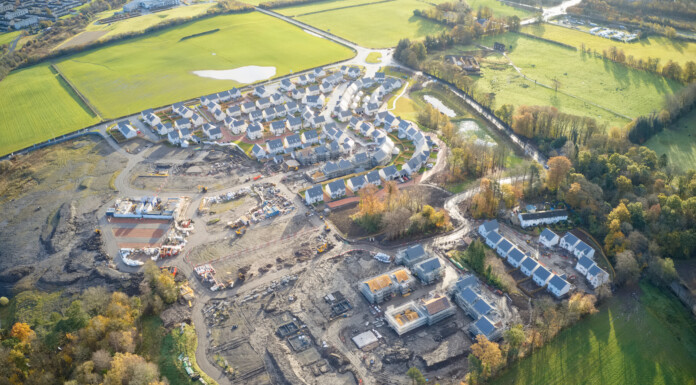An ambitious plan to build an estimated 2950 houses in Wairarapa as part of a 30-year strategy was adopted by the Wellington Regional Leadership Committee [WRLC] on Tuesday.
The Future Development Strategy [FDS] covers Wairarapa, Wellington and Horowhenua and was developed to help “achieve the collective vision of providing sustainable growth for a predicted increase of 200,000 people over the next 30 years”.
The strategy adopted by WRLC outlines plans for housing and infrastructure to support a population increase the size of Wellington city, with an estimated 99,000 houses to be built across the three regions.
The map of FDS priorities shows Featherston as a ‘Priority Development Area’ while there are three greenfields ‘Future Development Areas’ in Carterton and Masterton – Carterton East, and Chamberlain Rd and Cashmere Oaks in Masterton.
WRLC chair and Rangitāne o Wairarapa iwi representative Darrin Apanui said adopting the FDS would support the “integration of new residents into our communities, with thriving urban environments with adequate, liveable housing, transport connections and access to council services”.
Zoned land would be prioritised under the FDS and growth is expected to be kept in existing areas “where possible”.
The predicted future population comes from a Sense Partners forecast in 2020 of an increase in the region of around 250,000 by 2051.
That pre-Covid-19 estimate of growth was replaced by a lower projection in 2023 of 184,000 by 2052.
The Sense Partners projections are “based on running hundreds of simulations that calculate forecasts for population, employment, migration, and other factors”.
In contrast, Stats NZ has more modestly predicted a median growth of 79,000 between 2018 and 2048.
The FDS document, although based on the higher growth rate, “acknowledges that it would rely on sustained high net migration. To address this uncertainty, it prioritises and sequences new growth areas and investments”.
The 30-year plan will be split into two phases, with the first phase running from years one to 10, and the second phase being from years 11 to 30.
Housing developments in Wairarapa would primarily be done in phase one with an estimated 500 homes built in Featherston, 330 in Carterton East, 400 in Cashmere Oaks, and 530 in Chamberlain Rd.
Further developments in phase two would see an estimated 520 more homes built on Chamberlain Rd and 670 in Carterton East – bringing the total estimated number of homes built to 2950.
Land in Waingawa spanning 100 hectares would be developed into the Waingawa Industrial Estate.
The FDS takes into account infrastructure and the need to maintain, upgrade and develop it, making reference to three-waters and public transport as two examples.
In assessing key constraints for development in Wairarapa, the FDS noted that development opportunities would be more resilient to hazards found in coastal areas in parts of Wellington and Horowhenua.
Most developable land around towns in Wairarapa are classed as highly productive land and this constraint will require more detailed planning prior to development, “to ensure that the impact on highly productive land is kept to a minimum”.
Further constraints in Wairarapa include “areas with significant mana whenua values, natural hazards [including areas at risk of flooding and seismic hazards], historic heritage, contaminated land, SNAs [Significant Natural Areas], and areas of outstanding natural character”.
Development of the Waingawa Industrial Estate in Carterton would be subject to investment in upgraded infrastructure but 100 hectares of industrial zoned land can be developed within the next 10 years.
The FDS notes a requirement for intensification where it prioritises “growing up within existing urban areas before growing out”; intensification that would be seen in Masterton and Carterton developments.
Infrastructure needed to support development includes transport [roads and public transport], three waters, energy and telecommunications, as well as social and community infrastructure like education and health.
Following the adoption of the FDS, the next step will be focusing on the strategy’s Implementation Plan that will “set out priority actions to be undertaken by partners along with suggested timeframes for completion”.
WRLC deputy chair and GWRC chair Daran Ponter said infrastructure development needs to be “smart”.
“For example, more roads can lead to more traffic and congestion, when we should be looking at investing in ways to reduce demand, create efficiencies by working together, and integrate spatial planning,” Ponter said.
A full copy of the adopted FDS can be found on the Greater Wellington website at gw.govt.nz



Dreams ? If we can’t agree on development now with the environmentalists on what we have and keep it maintained why spend money on meetings for future development. Fix the policy’s we have now so we can plan ahead.